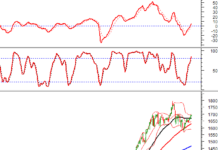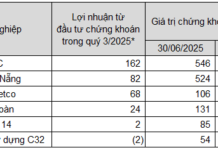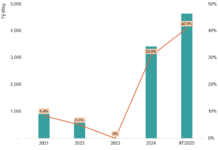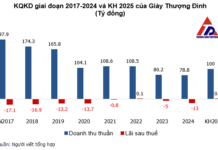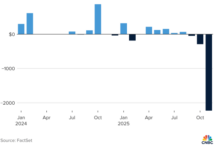For years, Vietnamese seafood enterprises primarily relied on exports to the US, EU, Japan, South Korea, and China. However, tariff barriers, evolving standards, and declining purchasing power squeezed profits, forcing businesses to diversify. This led to exploring new markets through trade agreements like EVFTA, UKVFTA, and CPTPP, as well as niche markets like Halal. Nonetheless, according to market development expert, Ms. Nguyen Thuy, it’s crucial to also focus on the domestic market, where daily consumption habits present a significant opportunity.
Vietnam has a population of over 100 million people, with an average seafood consumption of nearly 40 kg per year, presenting a vast market potential compared to the short-term billion-dollar revenues of other food brands.
“If people are willing to spend money on snacks like chips and processed chicken feet, which are not particularly healthy, why can’t seafood – a nutrient-rich product – capture that market share?”, Ms. Thuy questioned.
The biggest hurdle is the preference for fresh produce. Many consumers believe that fish must be swimming to be tasty, while, in reality, properly frozen seafood retains its freshness and nutritional value. This “buy with your eyes” mentality sometimes misleads customers, as fish sold in traditional markets may have been treated to maintain their color. Changing this perception is a significant barrier that businesses need to address consistently.
A positive sign is that younger generations are shifting consumption habits. Gen Z and Millennials, with their busy lifestyles, prefer convenient, safe, and readily cookable products. Instead of seafood being transported from coastal regions to cities by passenger buses, as was previously common, they can now find attractively packaged seafood with clear origins at their local supermarkets. This trend is evident in the 38% increase in fresh food orders on e-commerce platforms in Hanoi and Ho Chi Minh City in 2023.
Additionally, the expanding middle class has fueled the demand for “tasty and beautifully presented” meals. Consequently, ready-to-eat meals, hot pot packages, and vacuum-sealed frozen products have become familiar choices. Ms. Thuy emphasized that packaged seafood for families currently has the highest demand and will remain a promising segment.
However, tapping into the domestic market entails more than just selling export products locally. According to the expert, it requires a comprehensive strategy, including context analysis, target customer identification, core product development, distribution channel expansion, and fostering a unified team spirit.
“To succeed in the domestic market, a shift in mindset is essential. Only by embracing change can we conquer the market, rather than clinging to the old habit of solely focusing on exports,” she asserted, adding, “Difficulties won’t disappear, but they will make way for those with plans.”
 Ms. Nguyen Thuy believes that the domestic seafood market holds untapped potential – Photo: Tu Kinh
|
Sharing the same viewpoint, Ms. Nguyen Thi Thu Trinh, Deputy General Director of Saigon Food, likened product development to raising a child, requiring constant nurturing, innovation, and patience. At Saigon Food, only about 10% of their products are genuinely successful, with the rest serving to diversify their offerings and retain consumers.
In reality, some enterprises have found their niche to establish their market presence. Saigon Food, for instance, is thriving with its children’s porridge line, contributing 30% to their revenue. Other companies may choose to focus on clams, shrimp, or pangasius, as long as they have a clear strategy and invest in packaging, traceability, and brand building to create differentiation.
Allocate 40% of the Budget to Marketing
Domestic business necessitates a distinct marketing strategy. While exports rely on presence within partner systems for recognition, the domestic market demands that enterprises narrate their brand story and establish long-term trust. Ms. Thuy recommended allocating up to 40% of the budget to communication, utilizing both online and offline channels, while maintaining a presence at fairs, supermarkets, and digital platforms.
“Many exporters are used to minimal advertising, relying solely on their presence on Google Maps or product labels for brand recognition. However, the domestic market is different; there’s almost nothing for consumers to remember you by. Hence, enterprises must sell retail products and invest in advertising and communication. This is the brand-building phase, and allocating a budget for marketing is imperative,” she asserted.
Alongside marketing, logistics play a vital role in the success of frozen seafood products. Ms. Thuy cited the example of Highlands Coffee, which faced the challenge of delivering bread from suppliers in Hanoi and Hai Phong to their nationwide network of cafes. To ensure consistent quality, they invested in a robust fleet of refrigerated vehicles for cross-country transportation. As a result, customers in Ho Chi Minh City could enjoy the same quality bread as those in Hanoi.
Similarly, Saigon Food now uses electric motorcycles with insulated boxes for deliveries, as many areas restrict access to trucks. For seafood, even minor transportation issues can compromise quality, rendering marketing efforts futile.
“The question here is not whether we can do it but whether we want to. We must find ways to deliver our products to consumers,” Ms. Thuy emphasized.
International experience also underscores the strategic importance of developing the domestic market. Thailand, for instance, retains 60% of its production for domestic consumption, providing a buffer when exports fluctuate. In contrast, Vietnam’s domestic consumption stands at only 5-7%. According to the expert, enterprises should allocate 15-30% of their production for the domestic market, gradually aiming for a 50/50 balance as capabilities allow, thereby maintaining export market share while solidifying their domestic position.
– 17:00 23/08/2025
Unlocking the Domestic Market’s Potential: A Strategy for Sustainable Growth in the Seafood Industry
The domestic market, with its vast purchasing power of over 100 million consumers, presents a strategic opportunity for Vietnam’s seafood industry to sustain stable and robust growth. By effectively tapping into this market, the industry can unlock a powerful solution to maintain its momentum and prosper.
















